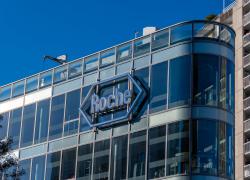
ASH 2023 – Arcellx still hopes to challenge Carvykti
The group highlights safety and manufacturability, as well as efficacy, but investors apparently have doubts.
The group highlights safety and manufacturability, as well as efficacy, but investors apparently have doubts.

Arcellx was one of the big winners of the ASH abstract drop, when data suggested that its Gilead-partnered BCMA-directed Car-T candidate CART-ddBCMA was as good as Johnson & Johnson/Legend’s rival product Carvykti in late-line multiple myeloma. However, doubts have begun to creep in given Arcellx’s weighty valuation, and the stock fell 7% today.
The company put out a press release on Friday, ahead of its ASH presentation today, and this estimated that progression-free survival with CART-ddBCMA was 28 months; notably, this is below Carvykti’s mPFS of 35 months in the Cartitude-1 trial.
However, Arcellx executives, speaking to ApexOnco on the sidelines of ASH, refuted any suggestion that CART-ddBCMA, now known as anitocabtagene autoleucel (anito-cel), is any less efficacious than Carvykti. They also highlighted better manufacturability and, potentially, safety with anito-cel. They say these will become key considerations if the project makes it to market.
The company sees room for several BCMA-targeting Car-Ts. Even Bristol Myers Squibb/2seventy bio’s underperforming Abecma “will have a role to play in the market”, said Arcellx’s chief executive, Rami Elghandour. “It’s not as efficacious as us or Carvykti. But it’s the type of market where you need multiple players because there’s a lot of demand.”
No comparisons
The data on anito-cel presented at ASH today concerned 38 patients with fourth-line or later multiple myeloma in a phase 1 study.
At a cut-off date of 15 October 2023 subjects had been followed for a median of 26.5 months. There was a 100% overall response rate, with 29 complete responses – data already reported in the abstract.
The estimated mPFS of 28 months, and how it stacks up against Carvykti, therefore appears to be what has spooked investors.
Elghandour cautioned against making cross-trial comparisons, noting that patients in Arcellx’s study were sicker than those in Carvykti’s Cartitude-1 trial. However, he highlighted a new analysis of Cartitude-1 and 4, also presented at ASH, which excluded earlier-line patients and produced an adjusted PFS of 24 months with Carvykti.
On this basis, he claimed that anito-cel’s efficacy was “at least as good” as Carvykti’s, and that the Arcellx project is differentiated on safety and manufacturability.
On the latter point, Elghandour pointed to a 70% transduction efficiency with anito-cel, versus around 16% with Carvykti. The reason for the difference, he said, was the synthetic binding domain used in anito-cel, which is “smaller and simpler” than MAb-derived binders employed in other Car-Ts.
Arcellx’s chief medical officer, Chris Heery, added that in the commercial setting the group expects to deliver cells to patients in around 17 days – in line with the timeline for Gilead’s Yescarta.
On safety, Elghandour stressed that there were no cases of delayed neurotoxicity or parkinsonian symptoms, which are both called out on Carvykti’s label. Heery admitted that “we need more patients and follow-up, but we do think rates will be significantly lower [than with Carvykti]”.
Immagine
Before anito-cel can reach the market, though, it will need to prevail in the pivotal Immagine-1 trial in fourth-line multiple myeloma. Initial results from the study, which was previously on clinical hold, are due in the second half of 2024, with launch of anito-cel expected to follow in 2026.
Arcellx also has plans in second-line disease, with a trial slated for next year. The execs declined to give more details on its design, except that it would account for a rapidly evolving multiple myeloma setting in which Darzalex quadruplets are becoming widely used first line.
Going back to the question of cross-trial comparisons, Heery said: “The margins of 5% here or 2% there on these endpoints are unlikely to make a difference about how a physician decides to use a therapy.”
Still, given big expectations around Arcellx, it is perhaps not surprising that any deviation will come under the microscope.
1561













